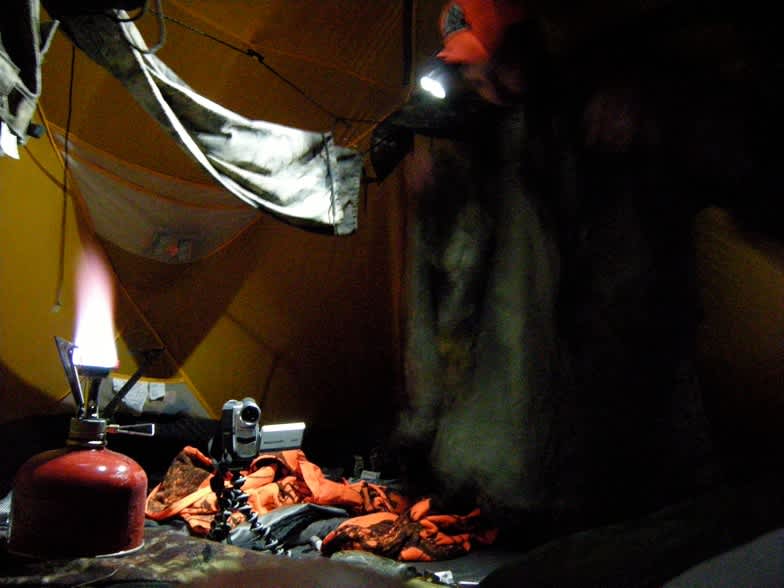How To Dry Out Camping Gear
OutdoorHub 05.23.11

There is only one thing worse than getting your clothes and gear wet when you’re camping, and that’s putting them back on the next day! When the elements are against you, there is sometimes no way around getting soggy.
Your first line of defense is having high quality, waterproof fabrics on the exterior that are also breathable, like Gore-Tex, to stop rain and snow from getting in while allowing sweat to evaporate. On the interior, you will want moisture-wicking base layers, like synthetics, wool, or silk, which transport perspiration away from the skin, preventing moisture being absorbed by your clothing. Not everyone comes so prepared, which was exactly the case during a spring bear hunt in Montana a couple of years ago. Mother Nature threw us a few curveballs and before I knew it, I was on my last pair of dry socks! The rain was relentless, but I was determined to wake up to a dry, comfortable outfit.
When the weather catches you off-guard, or that log you used to cross the creek is slicker than it looked, you will wish your tent came equipped with a dryer! Even though it didn’t, you can still make a last ditch effort to wring out your gear and sport dry threads in the morning. Just think back to your 5th grade science class when you learned about heat transfer and convection(heat rises, dummy) and put your education to good use!
You will need:
-Parachute cord, heavy monofilament, or similar string material (sturdy enough to hang clothes from)
-Vented roof
-Safety Pins (optional)
-Heating element (optional)
Steps to Take:
Step 1) Affix cord around tent perimeter and run a section diagonal from each corner (like an X) about 1ft. below roof of the tent. Most tents should have loops or other anchor points to tie off the cord(at least ours did). If not, use safety pins.
Step 2) Evenly distribute damp garments
Step 3) Open the roof vent (I hope you have a rain fly!) and crack the top of a couple of windows.
Step 4) Periodically turn on your heating element, (like a portable camp stove or butane mini-burner, depending on the size of your shelter)
Your body heat and the heat from your flame force the air inside your tent to circulate upwards, pulling the moisture your clothing along with it. The vent in the roof provides the warm air and more importantly, the moisture, a place to escape, allowing the cycle to continue. You have convection, my friend, which will dry your clothing much faster than shoving them in the corner!
It is critical that you vent the roof, especially if you are using a stove or other heating element, for a couple of reasons. If the moist air has nowhere to escape, it will remain in the tent, making for a sticky and humid morning. More importantly, it allows carbon dioxide out and oxygen into the tent, preventing you from falling asleep permanently. If you’re in a small 2-4 person tent, the likelihood of catching on fire increases dramatically if you pass out with the heater on, so refrain from doing so! Just use your common sense, please. And happy camping!

